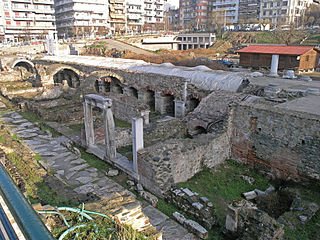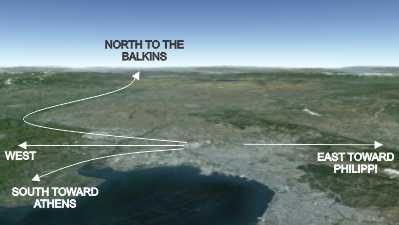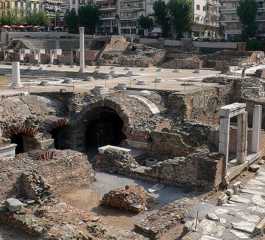A Brief History and Geography of Thessalonica
This quarter’s lessons focus on two of Paul’s letters to the church at Thessalonica. Today the city is called Thessaloniki and is a major a sea port of Greece on the northwestern shore of the Aegean Sea. It has a history that spans more that 2300 years.

The Cryptoporticus (Wikipedia article “Thesssaloniki”)
From its beginning in the kingdom of Macedon in 315, Thessalonica quickly became one of the most important sea ports of the kingdom due to its strategic location as a hub connecting several major trade routes, the most important one in Roman times being the Via Egnatia which ran east and west through Macedonia, connecting Europe with Asia. The city also connected trade routes that went north to the Balkans and south toward Athens. Under Roman rule Thessalonica was a free city (had its own government) that later became the capital of one of the four districts of Macedonia and eventually the capital of all the Greek provinces late in the history of Rome.
Luke suggests an intriguing question when he writes about “Philippi, which is the foremost city of that part of Macedonia, a colony” (Act 16:12 NKJV) If he included Thessalonica in that statement as one of the lesser cities, his statement would seem illogical since Philippi never became a large city whereas Thessalonica did, even though both were free cities.
Philippi was established before Thessalonica in 356 BC by Philip II, and there are perhaps two good reasons why Luke referred to Philippi as “the foremost city of that part of Macedonia”:
- Philip II established it for military purposes due to its strategic location along a major trade route of the Roman Empire that could effectively cut off military movement.
- There were a number of gold mines in the area that made Philippi a rather rich city and economically important to Rome.
In spite of these considerations Thessalonica was more important from the standpoint of trade as a hub connecting several trade routes and the sea which made evangelizing that city a priority issue. You can see from the picture below the central importance that city had to Rome and why establishing a church there was important.

Picture from Google Earth of present-day Thessaloniki with trade routes that when through the ancient city super-imposed.
[Edited July 7, 2012 to correct an error in dating.]
 (5)
(5)
